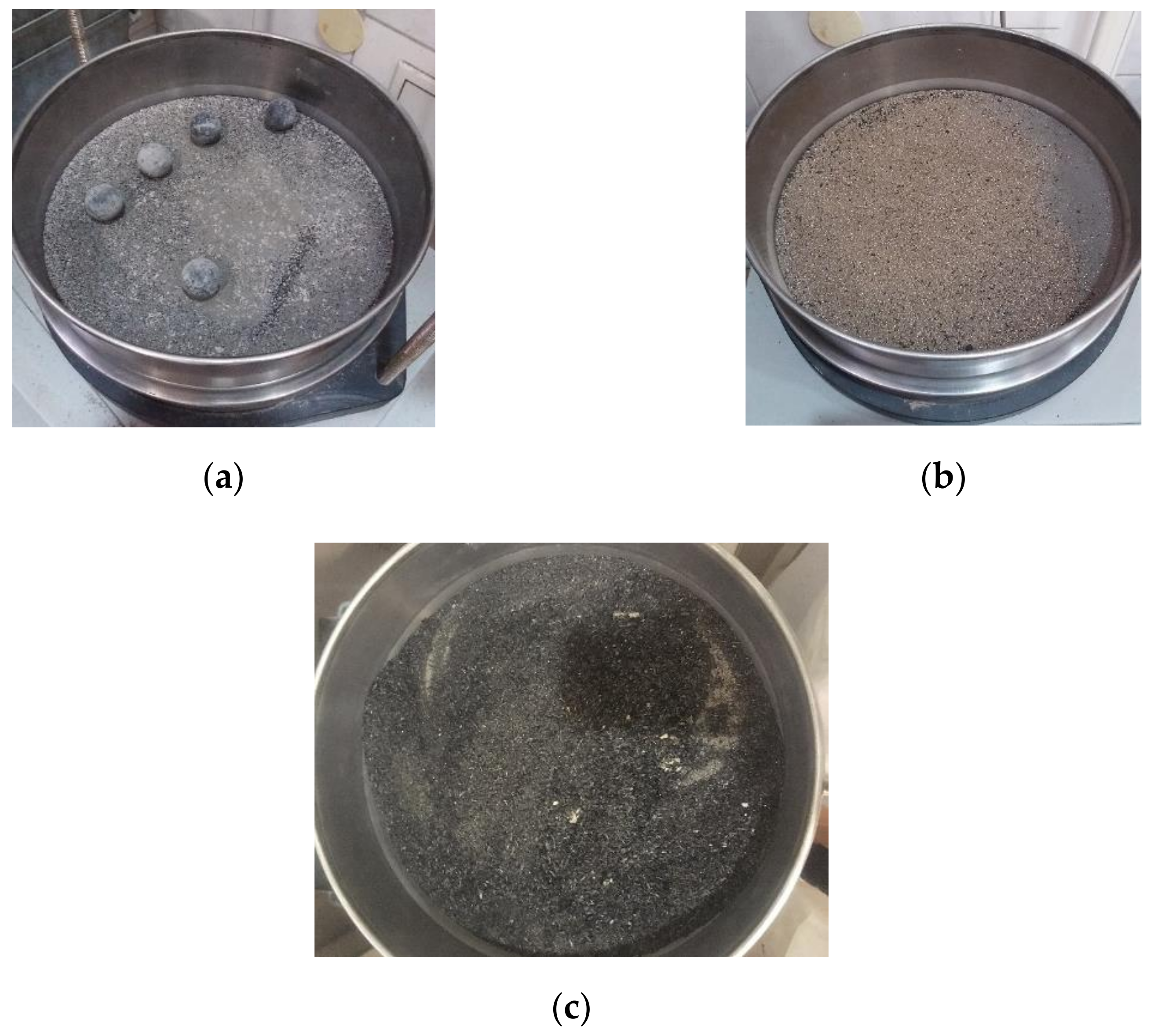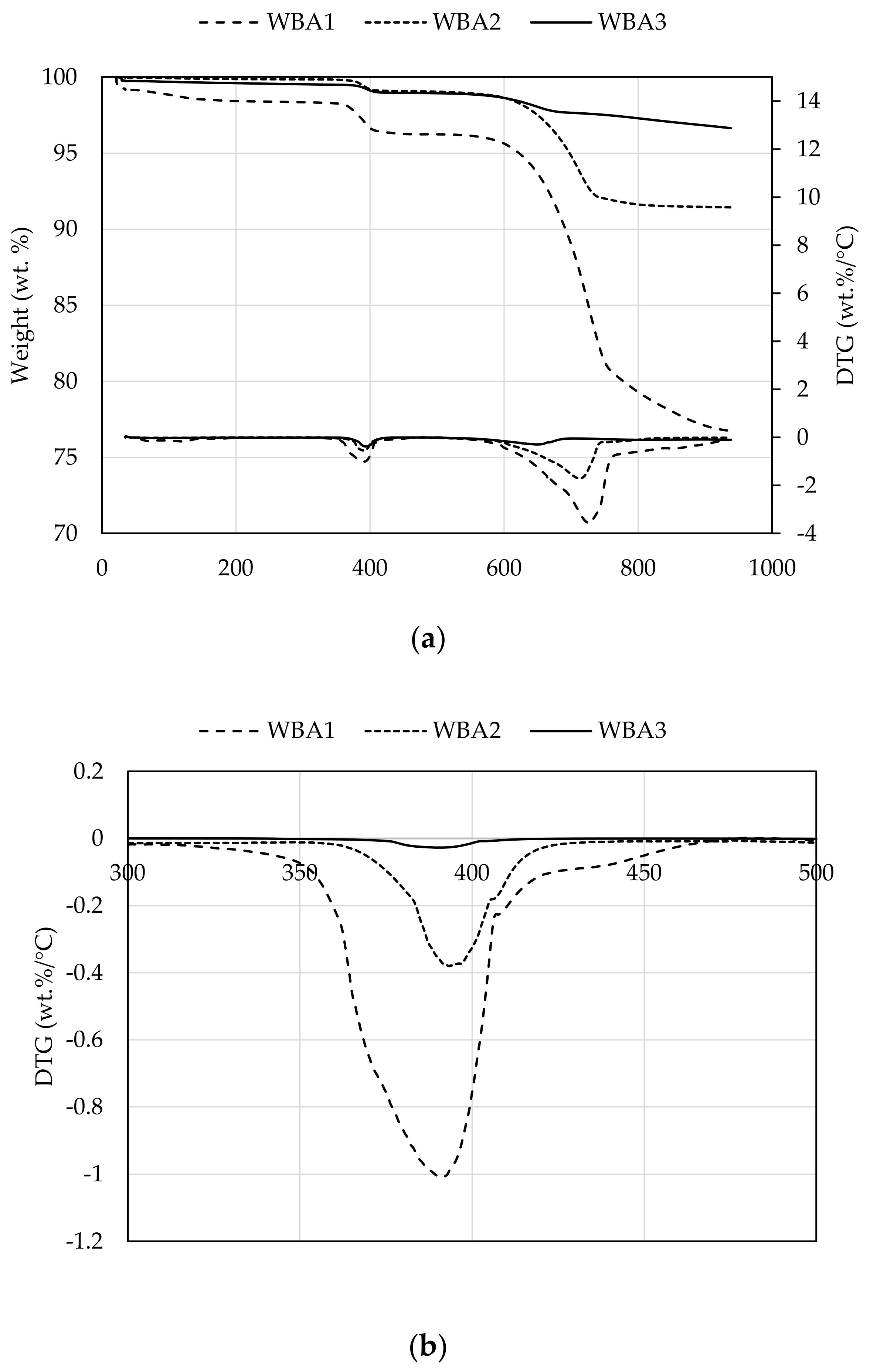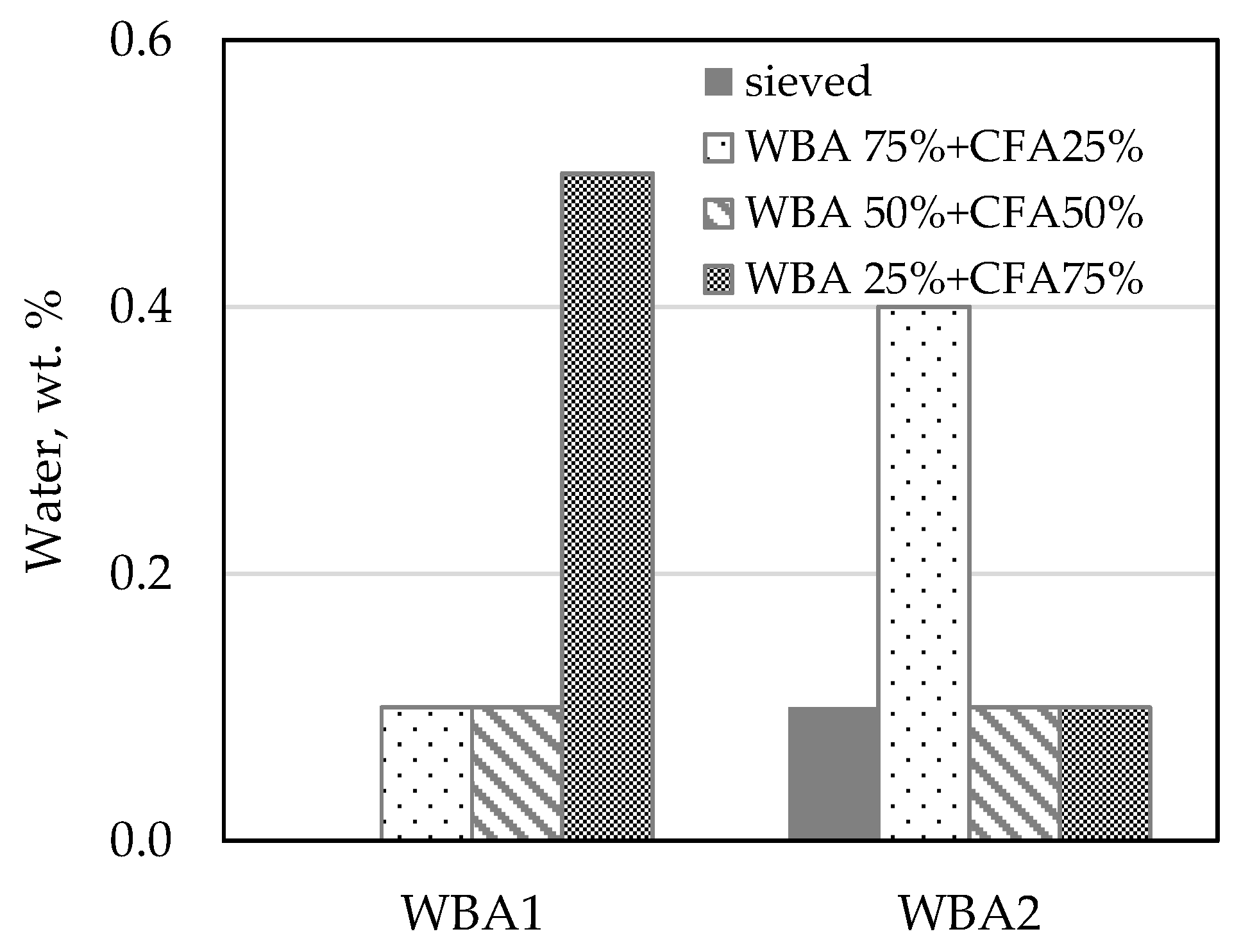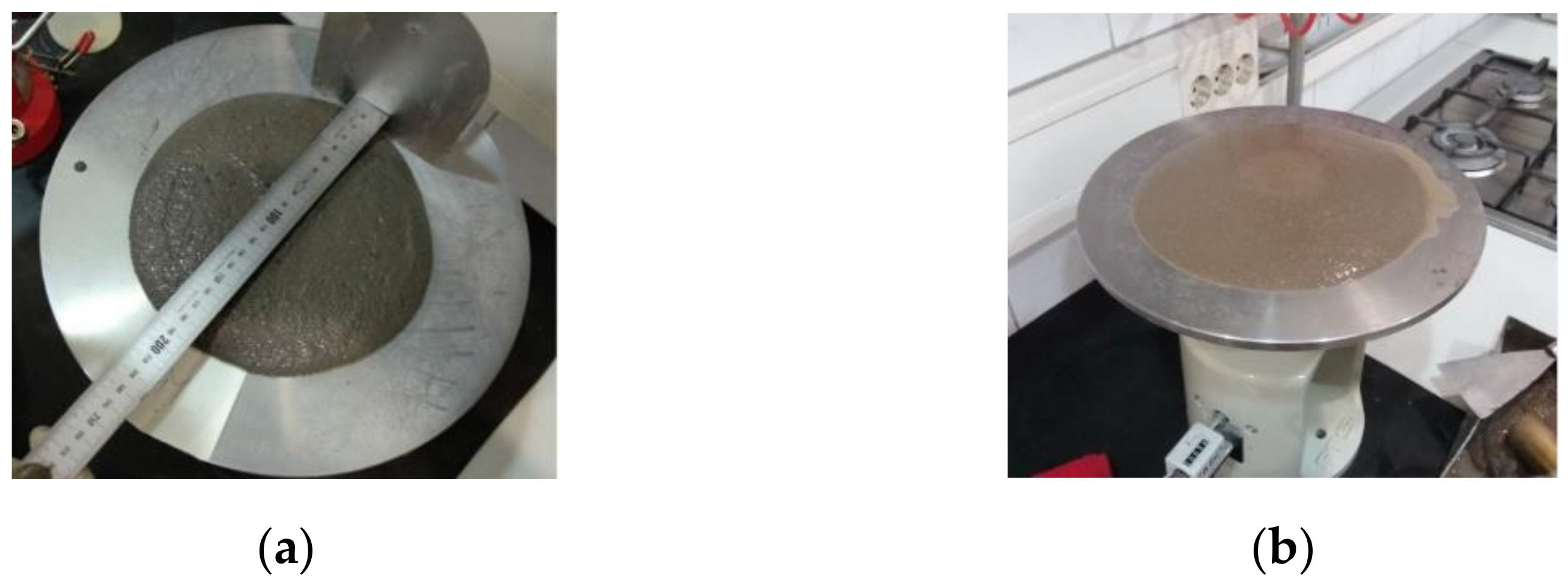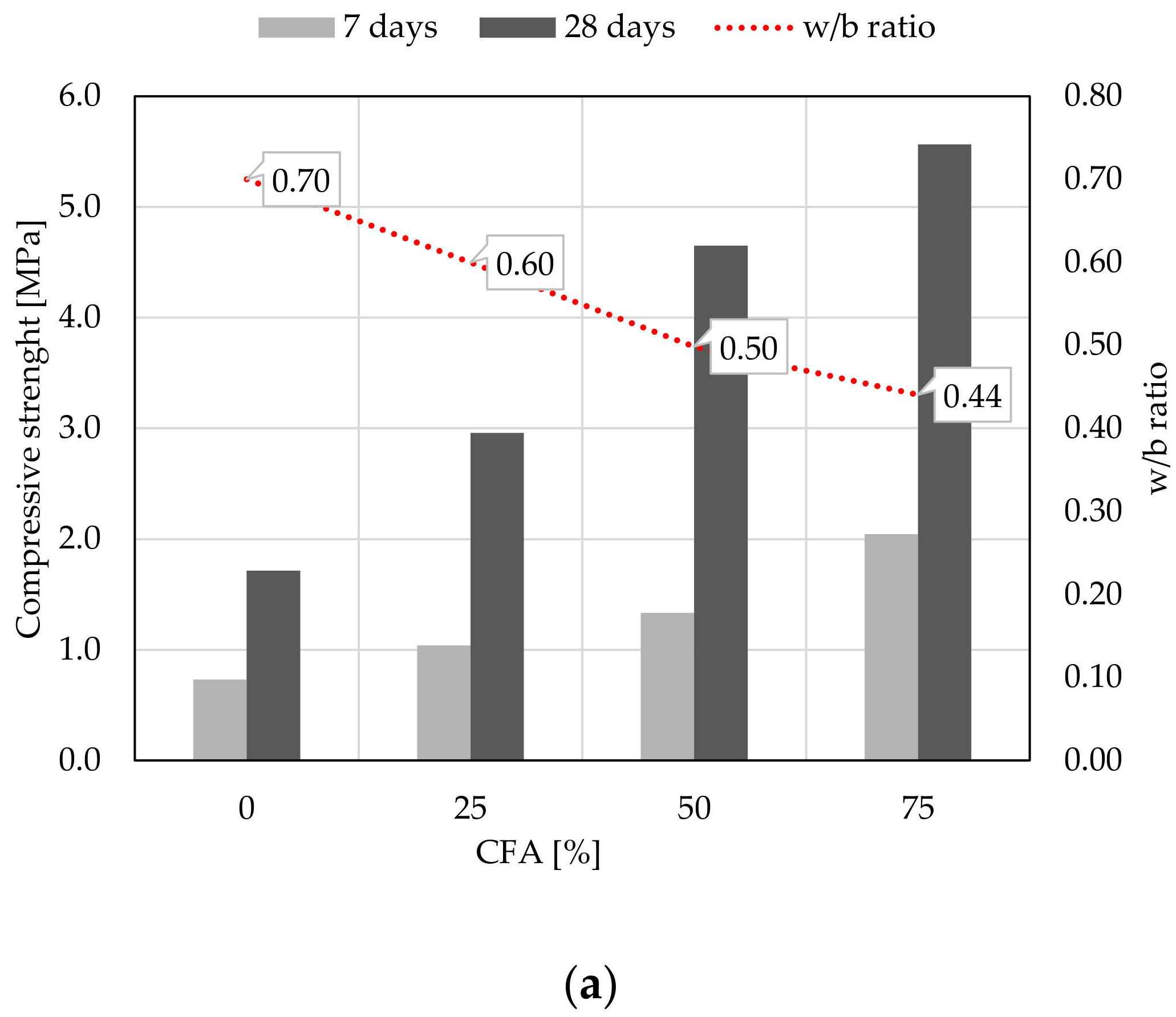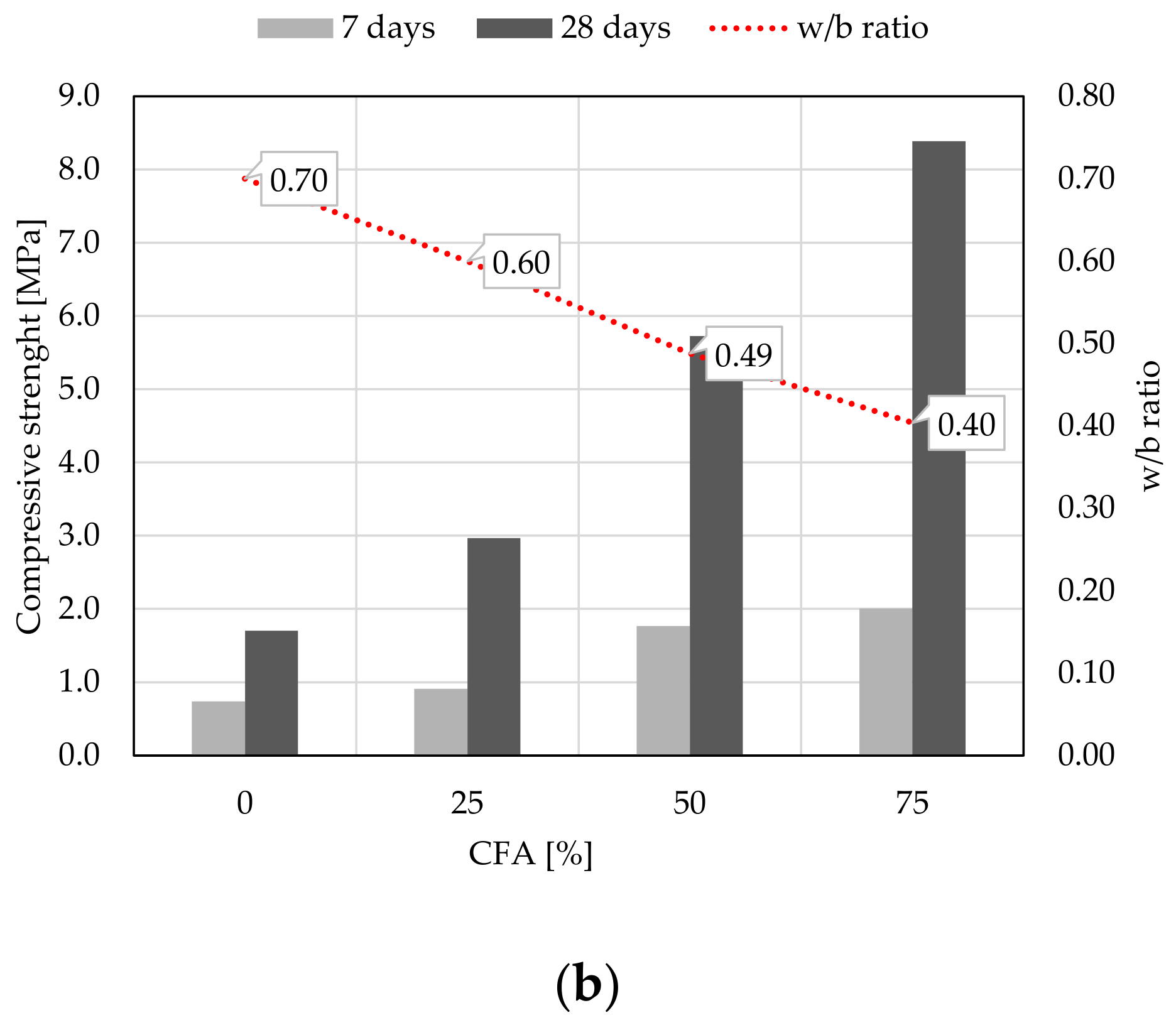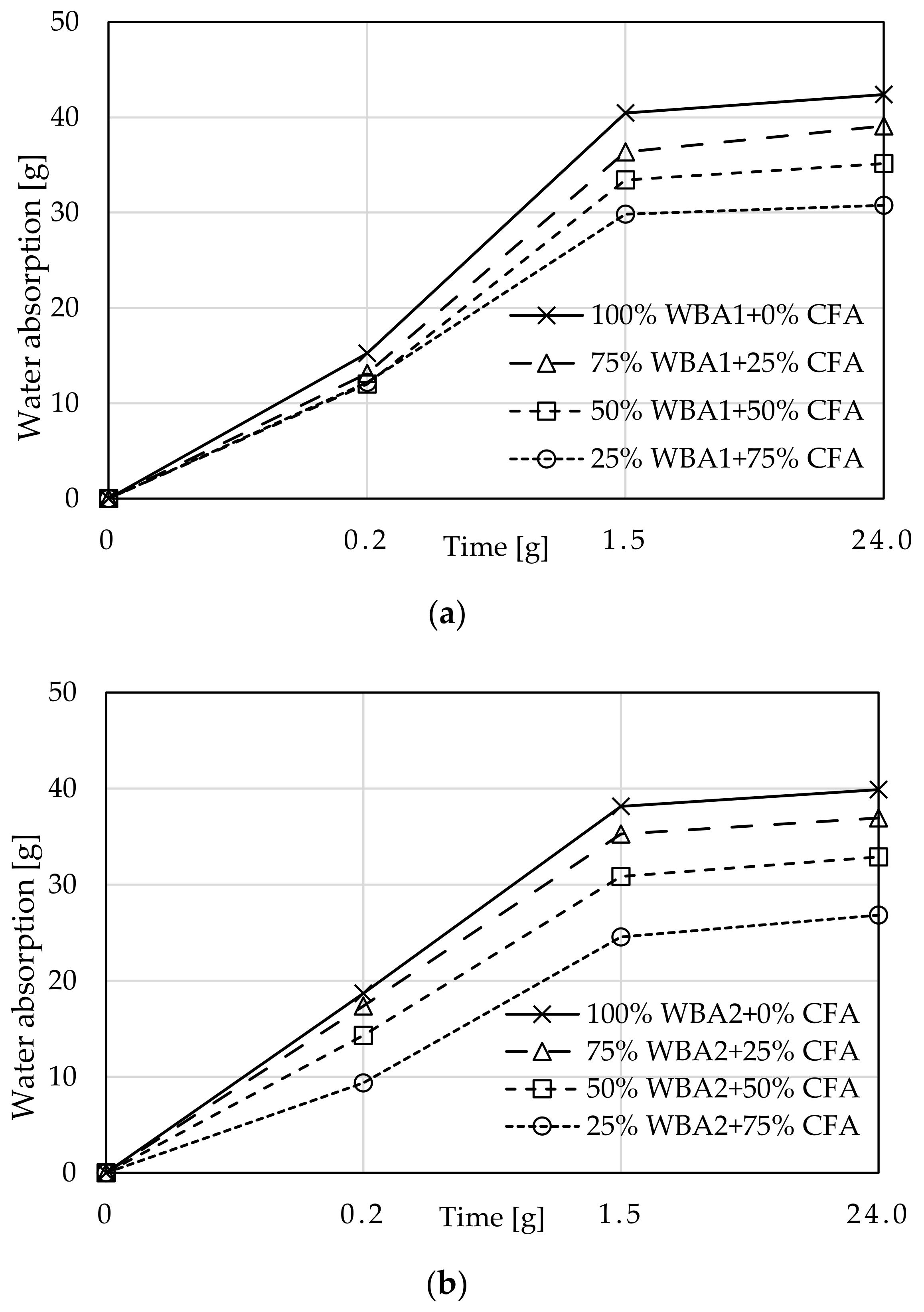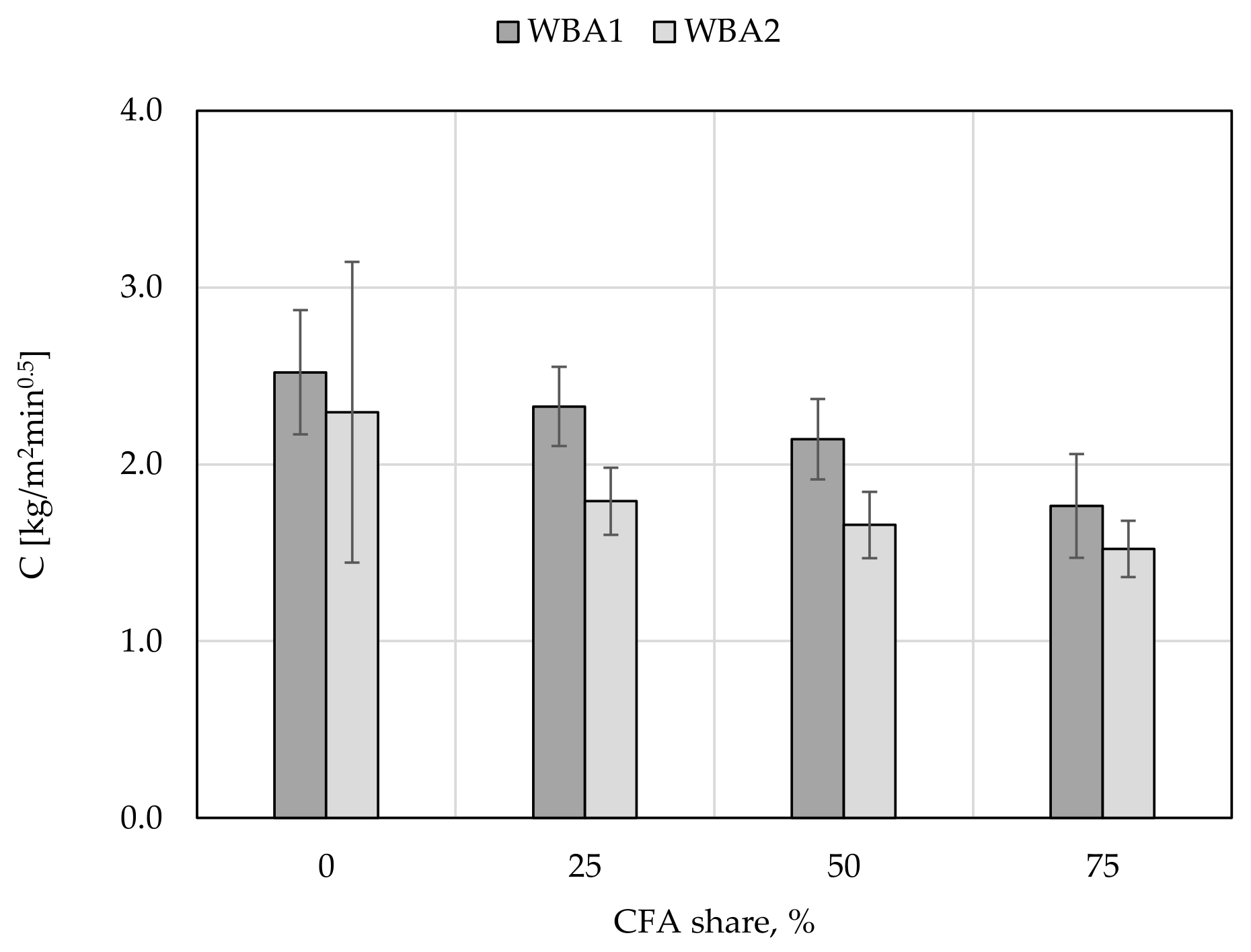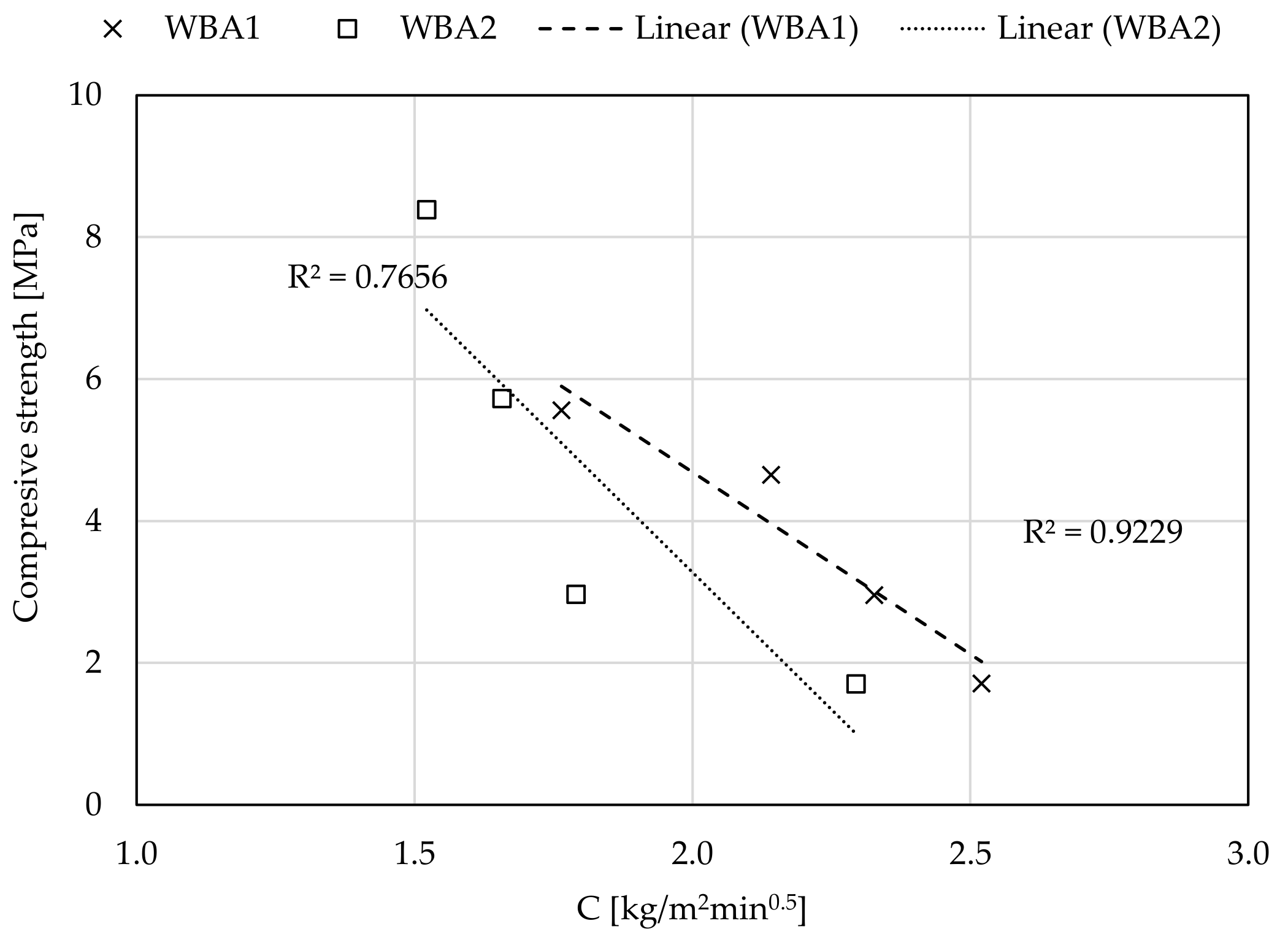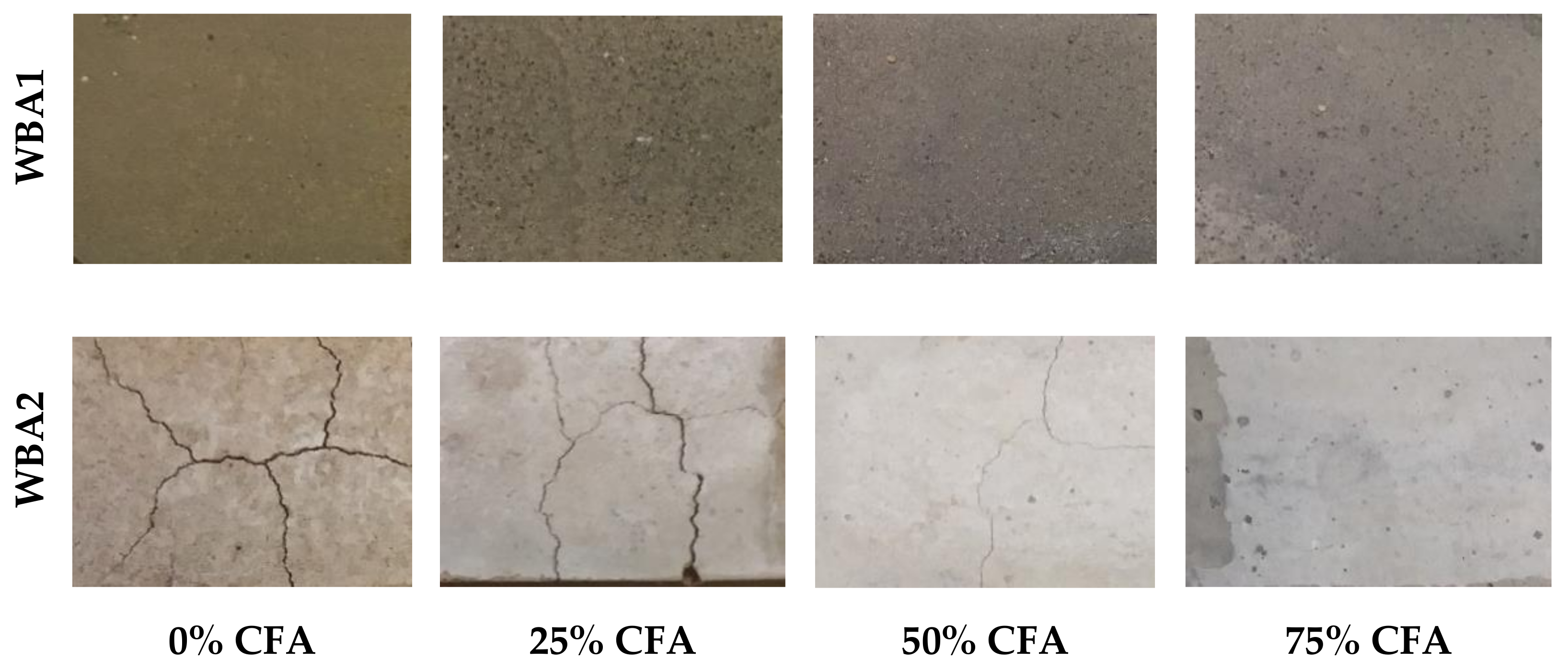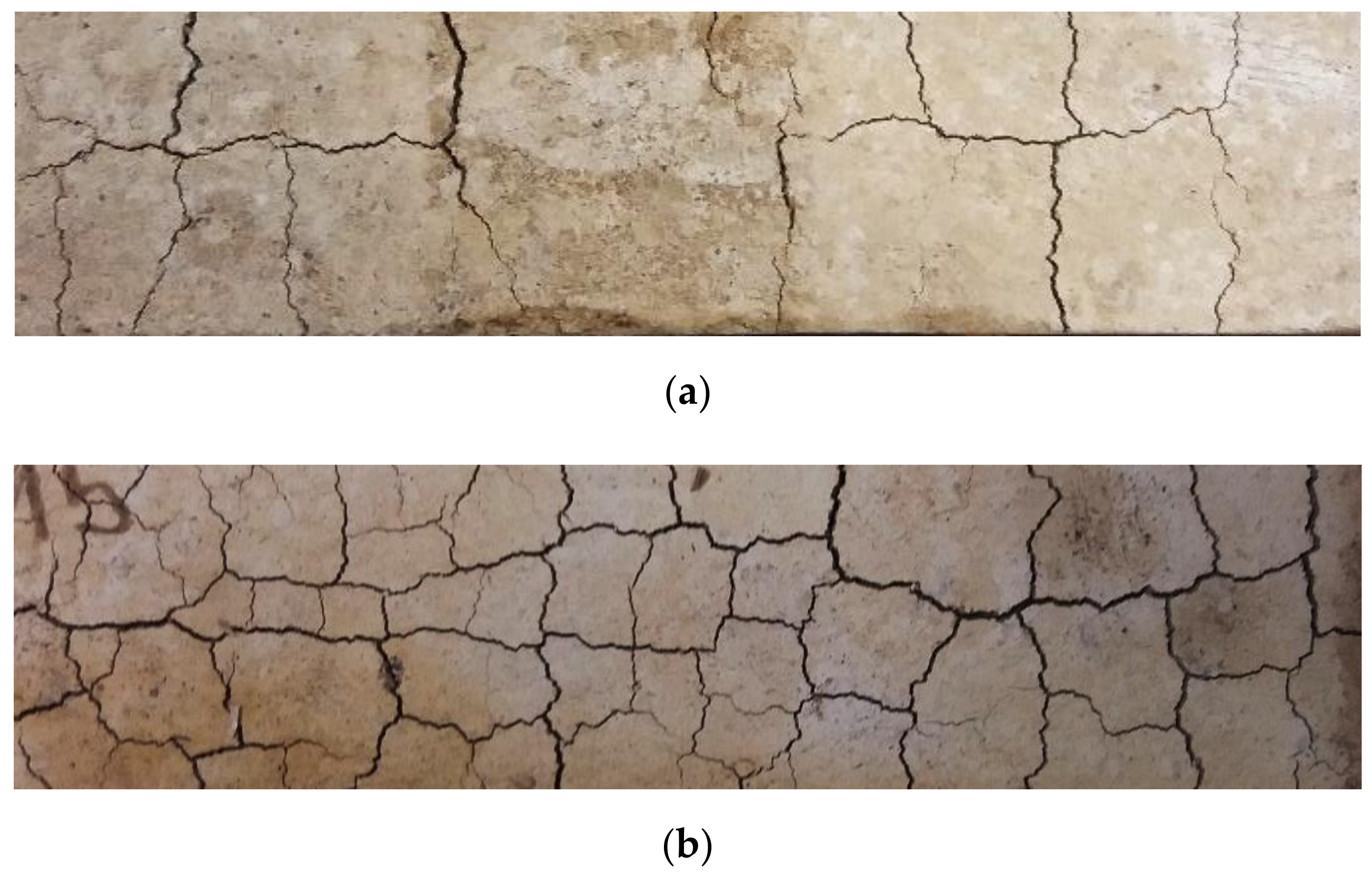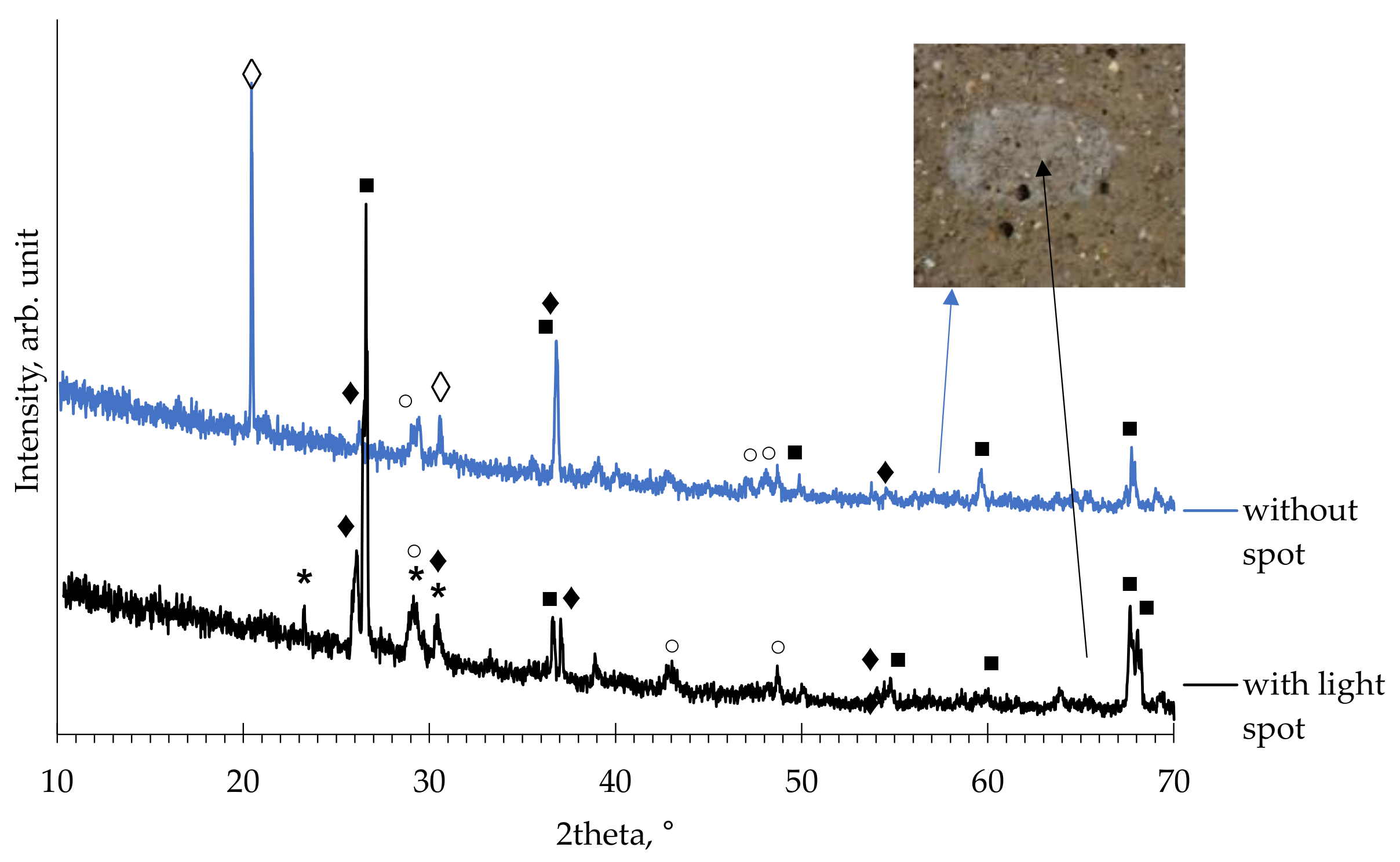1. Introduction
The development of building materials, both in terms of mechanical properties and durability, is challenging in the restoration of historic buildings, as traditional and modern materials are not compatible. Historic buildings have in common that they are altogether made of natural raw materials such as stone and bricks bound with lime mortar. Proper selection of repair materials is essential to achieve long-lasting restoration. Therefore, lime-based materials are necessary to achieve suitable material compatibility.
At the same time, renewables are going mainstream, have irrevocably shed the label “alternative” and are meeting the world’s growing energy needs. This underpins Europe’s plan to achieve climate neutrality by 2050, the backbone of European Green Deal, underpinned by a legally binding target of net zero greenhouse gas emissions [
1]. Although climate neutrality is controversial, wood biomass is considered a CO
2-neutral energy source because it releases almost as much CO
2 when burned as it absorbs during growth, making it one of the most important biomass sources for energy production in the EU, with a majority share of 59% of all renewables in terms of gross final consumption [
2,
3,
4]. Based on the Global Bioenergy Statistics [
5] report for an 18-year period (from 2000 to 2018), it can be seen that renewable energy sources have experienced significant growth and bioenergy (solid biomass, municipal waste, industrial waste, biogases, liquid biofuels) has the largest share in the total primary energy supply of renewable energy in 2018. The largest share of bioenergy is covered by solid biomass sources including wood chips, wood pellets, and traditional biomass sources. The use of bioenergy could make a significant contribution to the design of a low-carbon energy system in the EU, driven by sustainable production and use of wood biomass [
2,
6]. A bioeconomy based on locally produced biomass can effectively reduce supply chain uncertainty and provide stability—an important cornerstone for Europe’s green recovery after COVID-19 [
7,
8]. Accordingly, the industrial use of biomass for thermal and electrical energy production is expected to triple by 2035, compared to 2008 levels [
9,
10]. The current proliferation of wood biomass power plants already results in an immense amount of wood biomass ash (WBA). The combustion of 1 ton of wood biomass produces approximately 3% ash, resulting in a significant amount of this biogenic waste material [
11]. The predominant practice in dealing with ash is direct disposal in landfills and use as a soil amendment, often without any monitoring, indicating the urgent need for proper management of WBA [
2,
12,
13,
14,
15,
16,
17]. The valorization of WBA as a sustainable substitute for primary raw materials would help to reduce energy and material intensity and intensify the use of alternative materials. With the adoption of the new "Circular Economy Package", which includes the amending Directive 2018/851 on waste and the Directive 2018/850 on waste landfilling, the European Union additionally promotes decreasing waste disposal in landfills [
18]. On the other hand, according to Croatian National Environmental register of pollutants, WBA is classified as a waste whose free recycling is currently not possible domestically. In the research studies reported so far, WBA has been identified mainly as a resource substitute in cementitious composites. However, considering the similarities between the chemical composition of WBAs and hydraulic lime (HL), this research focused on its possible classification as building lime and with an effort to strongly emphasize the problem of industrial waste disposal.
Most WBAs are positioned in the CaO-Al
2O
3-SiO
2 ternary diagram in the range between limestone and portland cement [
19]. When considering mean values, the following oxides are mainly represented in WBA [
11]: CaO (43.03%) > SiO
2 (22.22%) > K
2O (10.75%) > MgO (6.07%) > Al
2O
3 (5.09%) > P
2O
5 (3.48%) > Na
2O (2.85%) > SO
3 (2.78%). Basically, WBAs are rich in calcium oxides, and the CaO content can even exceed 70% depending on the type of biomass used [
20]. Compared to coal fly ash (CFA), WBA contains more soluble alkalis, sodium and potassium and less aluminum oxides [
21]. The chemical composition of WBA is also highly variable and depends on the combustion technology. Therefore, quality control is essential in the production and application of biomass ash, even compared to coal fly ash, which is widely used regardless of the variations in its chemical composition [
17,
22].
Table 1 shows the requirements for HL according to the standard EN 459-1 [
23], i.e., the properties of binders, pastes and mortars that must be met for the material to be classified as HL.
At the same time, the electricity industry produces millions of tons of coal ash every year. In most countries, storage rather than reuse, is the default solution for coal ash management. The American Coal Ash Association (ACAA) reports each year on the production and use of coal ash in the United States, and their data show that about 60% of the coal fly ash produced is reused [
24]. Considering that any reuse of CFA is beneficial, this research aims to combine the benefits of using WBA and CFA in the construction sector.
Inspired by a small number of research studies conducted on cementless mortars using WBA [
13,
22], the overall objective of this research was to produce mortar using WBA and coal fly ash (CFA) and presents a continuation of research reported at [
25]. Specific objectives were: (a) selection of suitable WBAs by analyzing their chemical composition, (b) preparation of an alternative binder system by combining WBA and CFA, (c) analysis of the setting rate and volume stability of such systems. The following hypotheses are put forward: (1) it is possible to produce an alternative binder system by choosing the right proportion of WBA and CFA, (2) combustion technology and biomass origin influence the chemical composition of WBA, which is reflected by the variable content of CaO, SiO
2, and Al
2O
3 and the amount of free calcium hydroxide, thus directly affecting the applicability of WBA as hydraulic lime.
2. Materials and Methods
The experimental part of the research aimed to determine a suitable type of WBA for the production of hydraulic lime, taking into account the chemical composition of WBA. For this purpose, it was necessary to determine the appropriate proportion of WBA and CFA that would ensure the hardening of these binder systems.
2.1. Wood Biomass and Coal Fly Ash
The wood biomass fly ash (WBA) used came from three different wood biomass plants in Croatia and was combined with coal fly ash (CFA) obtained from a coal-fired power plant in Croatia. The general characteristics of the plants, i.e., combustion type and temperature, and the type of wood biomass are given in
Table 2. The combustion technologies and the type of biomass used affect the chemical composition of the WBA [
13,
22], which directly affects the possibility of mortar hardening and thus the applicability of WBA as a lime substitute.
Samples WBA1 and WBA3 were collected in January, while sample WBA2 was collected in April of the same year. Coal fly ash (CFA), which complies with EN 450-1 [
26], was obtained from a coal-fired power plant in Croatia.
A total of 8 binder blends were prepared, as a mixture of WBA and CFA in the following ratios: 100:0, 75:25, 50:50, and 25:75.
2.2. Paste and Mortar Production
For the preparation of the paste mixtures, 500 g of binder blends and potable water were used. The amount of water was determined to achieve a standard consistency according to EN 196-3 [
27]. Mortars were prepared using binder blends, potable water and standard sand according to EN 196-1 [
28]. The mass ratio of binder: aggregate was 1:1.5 and the water content was determined to achieve a slump of (185 ± 3) mm as prescribed in EN 459-2. The chemical additive, a polycarboxylate plasticizer, was added to each mix at 1% by mass of the binder. Suggested designations for pastes and mortars were: (a) Pi-100, Pi-75, Pi-50, Pi-25 for pastes, (b) Mi-100, Mi-75, Mi-50 and Mi-25 for mortars, where
i is the WBA sample number.
Fresh state properties for both, pastes and mortars, were determined immediately after mixing. After casting, the specimens were kept covered at laboratory conditions for 24 h until demolding, to prevent water evaporation. After demolding, the specimens were in mist room at 20 ± 2 °C and RH ≥ 95%, until testing compressive and flexural strength. For capillary absorption test, specimens were kept at 20 ± 2 °C and RH ≈ 65%, according to the EN 1015-18 [
29]. Compressive and flexural strength were tested at the age of 7 and 28 days, while capillary absorption was measured after 28 days. Each property was tested on 3 specimens.
2.3. Methods
Hydraulic lime (HL) is classified according to the standard EN 459-1 [
23]. Conformity with this classification is assessed using the standard methods given in
Table 3, in accordance with the standard EN 459-2 [
30]. The physical and chemical properties of each type of WBA and CFA were determined prior to mixing the binders to verify that they conform to EN 459-1 [
23].
Thermogravimetric analyses (TGA) of CFA and non-sieved WBA were performed using a TGA 55 instrument, with a platinum container filled with approximately 50 mg of powder sample. The temperature range was between 35 and 950 °C at a constant heating rate of 20 °C/min using inert gas (nitrogen, flow rate: 60 mL/min).
The compliance of the tested binders with the criteria listed in
Table 1, taking into account the WBA content in the binder, was carried out as follows [
22]:
where:
Xi expressed value of observed physical or chemical property
XCFA value of the physical or chemical property for CFA
XWBA value of the physical or chemical property for used WBA
(%/100)CFA content of CFA in the mixture, expressed in percentages
(%/100)WBA content of WBA in the mixture, expressed in percentages
Chemical composition was performed using the Energy Dispersive X-Ray Fluorescence Spectrometer (EDXRF) Nex CG (Rigaku, TX, USA) and determined for all samples in April, while TGA was performed in December, although the authors suggest that characterization should be performed for the same age of specimens. During this period, the WBA samples were stored sealed in the plastic bags.
The conformity of the wood biomass-coal fly ash system as a binder for repair mortar was evaluated according to the methods given in
Table 4, in accordance with the standard EN 459-2 [
30].
4. Conclusions
The presented research investigated the properties of binders, pastes and mortars with different proportions of WBA and CFA, aiming of classifying them as hydraulic lime according to HRN EN 459-1 and preparing an environmentally friendly mortar for the restoration of historic buildings. Based on the investigation performed, the following conclusions were drawn:
After considering the chemical composition of WBA, the highest similarity with HL is found for WBA2 and then for WBA1, while WBA3 shows more similarity with coal fly ash. The particle size distribution shows a different trend starting with WBA1 as the finest to WBA3 as the coarsest material.
A total of eight binders were prepared, four for each WBA (WBA1 and WBA2), as a mixture of WBA and CFA in the following ratios: 100:0, 75:25, 50:50, and 25:75. WBA3 was discarded due to its high content of silica and low content of available lime. The suitability of the tested binders was evaluated against the criteria prescribed in EN 459-1. All the binders tested met the specified criteria in terms of SO3 and available lime content. The particle size distribution criterion was met for all binders with WBA1, while for WBA2 only the binders with the lower content of WBA (WBA 50% + 50% CFA and WBA 25% + 75% CFA) met the criteria. The free water criterion was met for all binders tested.
Pastes with produced binders were tested to check the conformity with the soundness and setting time criteria. The volume stability results indicate that the specimen with 75% content of WBA1 and the specimen with 100, 75, and 50% content of WBA2 exceed the criteria prescribed in EN 459-1:2015. Larger deformations were determined for the specimens with WBA2 what is in agreement with the percentage of free CaO and free MgO determined for WBA2. The setting time increased with the increase in CFA content and can be explained by the slower reaction rate of CFA and not self-cementing properties of the low-calcium fly ash when mixed with water only. The delayed setting time for blends with WBA1 can be directly correlated with the increased LOI and alkali content in these binders.
The mortars with the prepared binders were tested for compliance with the air content and compressive strength criteria. All the tested mixes met the specified air content requirements, although slightly lower values, up to 6% on average, were obtained for the mixes with WBA1 due to the smaller particle size. The increase in both compressive and flexural strength of mortars with WBA and CFA binder compared to the HL after 28 days is the result of the pozzolanic reaction of CFA and available Ca(OH)2, the reduced w–b ratio and the finer CFA granulometry, leading to an increase in mortar density.
The comparison of the obtained results with the criteria of the HRN EN 459-1:2010 standard confirmed the possibility of classifying the binder with 25% content of WBA2 as HL5 and thus the possibility of using it as a renovation material. All other binders should be further optimized, paying special attention to the volume deformations that occur in pastes and mortars with higher contents of WBA2. The content of expansive components such as CaO, MgO, etc., could be canceled out by various maturation processes and insufficient fineness of the particles by grinding. WBA1 also shows potential for use in restoration mortars, as binders with 50% or less WBA1 meet all criteria except final setting time. This could be further improved by various chemical additives such as accelerators.
In conclusion, this new way of using WBA as a secondary raw material helps to make this waste, which is still landfilled, more environmentally friendly, resource efficient and recyclable. Reused together with CFA, which has a very similar fate, it provides a beneficial and improved source of revenue for biomass and power plants and a source of materials for the construction sector, as well as a means of reducing the carbon footprint of both.
